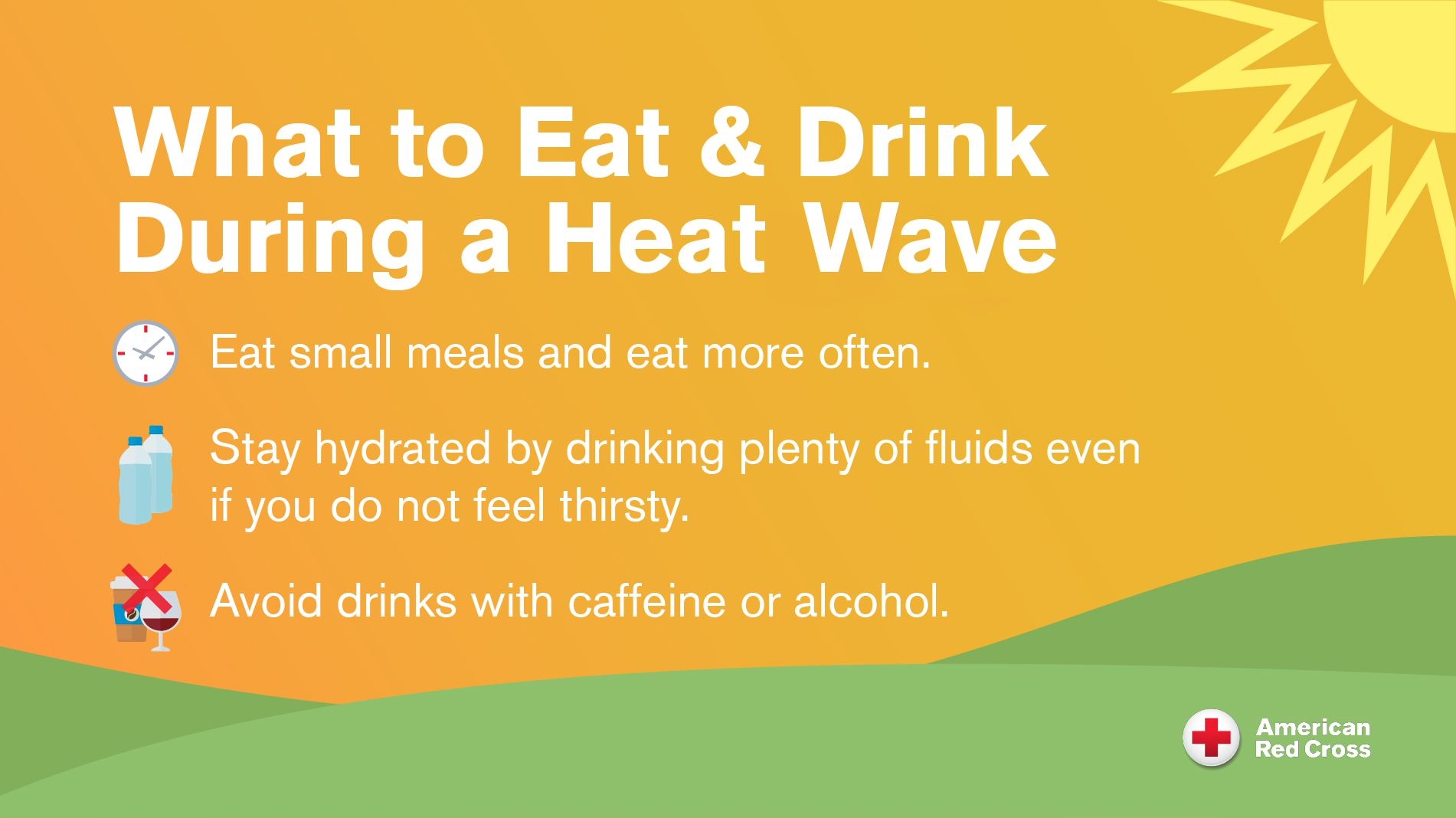Urgent Health Advisory: Extreme Heat And Safety Precautions

Table of Contents
Recognizing the Symptoms of Heat-Related Illnesses
Extreme heat can lead to various health problems, ranging from mild discomfort to life-threatening emergencies. It's vital to know the symptoms of heat-related illnesses to provide timely intervention.
Heat Exhaustion:
Heat exhaustion is a milder form of heat-related illness, often a precursor to heat stroke. Recognizing its symptoms is crucial for heat stroke prevention.
- Symptoms: Heavy sweating, weakness, dizziness, headache, nausea, muscle cramps, and cool, clammy skin.
- Treatment: Move to a cool place immediately. Drink plenty of water or sports drinks to replenish fluids lost through sweating. Loosen clothing and rest. If symptoms persist or worsen, seek medical attention. Early intervention is key in preventing heat exhaustion from progressing to heat stroke. Knowing the heat exhaustion symptoms is the first step in preventing serious complications.
Heat Stroke:
Heat stroke is a serious medical emergency requiring immediate action. It's characterized by the body's inability to regulate its temperature.
- Symptoms: High body temperature (above 103°F or 39.4°C), rapid pulse, confusion, seizures, loss of consciousness, flushed skin, and potentially vomiting. These heat stroke symptoms are critical to recognize.
- Treatment: This is a life-threatening situation. Call emergency services (911 or your local equivalent) immediately. While waiting for help, take steps to cool the body quickly. This could involve immersing the person in a cool bath, applying ice packs to the neck, armpits, and groin, or fanning them while spraying with cool water. Understanding heat stroke treatment is essential for saving lives. Prompt emergency heat safety measures are crucial.
Heat Rash:
Heat rash, also known as prickly heat, is a less severe but still uncomfortable condition.
- Symptoms: A red, bumpy, itchy rash, usually appearing on the neck, chest, groin, or skin folds.
- Treatment: Keeping the affected area cool and dry is paramount. Loose, breathable clothing can help. Over-the-counter lotions or creams may provide relief from itching. Preventing heat rash involves staying cool and dry.
Preventative Measures During Extreme Heat
Proactive measures are vital in mitigating the risks associated with extreme heat. These preventative measures can significantly reduce the chances of heat-related illness.
Stay Hydrated:
Hydration is paramount during periods of extreme heat. Your body loses fluids rapidly through sweat.
- Tips: Drink plenty of water throughout the day, even before you feel thirsty. Avoid sugary drinks, alcohol, and excessive caffeine, as these can actually dehydrate you. Electrolyte drinks can be helpful for replenishing lost minerals, especially after strenuous activity. This extreme heat hydration strategy is vital.
Limit Outdoor Activities:
Limit strenuous activities, especially during the hottest parts of the day.
- Guidelines: Schedule outdoor activities for cooler periods, such as early morning or late evening. If you must be outdoors during the peak heat, take frequent breaks in the shade. Understanding extreme heat activity guidelines is essential for personal safety.
Wear Appropriate Clothing:
Clothing choice plays a significant role in regulating body temperature.
- Heat Safe Clothing: Opt for lightweight, loose-fitting, light-colored clothing. Light colors reflect sunlight, keeping you cooler. Avoid dark-colored clothing, which absorbs heat.
Seek Air Conditioning:
Air conditioning is a lifeline during heatwaves.
- Importance: Spend as much time as possible in air-conditioned spaces. Libraries, shopping malls, and community centers often provide free access to air conditioning during extreme heat. These heatwave safety tips can significantly reduce risk.
Check on Vulnerable Individuals:
The elderly, infants, young children, and people with chronic illnesses are particularly vulnerable to extreme heat.
- Vulnerable Populations: Regularly check on elderly neighbors, friends, and family members, especially those living alone. Offering assistance with errands, hydration, and ensuring they have access to cool environments can make a significant difference. Extreme heat elderly care is crucial during heatwaves.
Emergency Preparedness and Response
Having a plan and knowing how to respond quickly is essential during extreme heat events.
Have a Plan:
Preparation is key to minimizing risk.
- Heatwave Emergency Plan: Develop a plan that includes identifying nearby cooling centers, emergency contacts, and strategies for staying cool in the event of a power outage.
Know the Signs:
Early recognition of heat-related illnesses is vital.
- Heat Illness Signs: Familiarize yourself with the signs and symptoms of heat exhaustion and heat stroke, as discussed earlier. This knowledge empowers you to respond quickly and effectively.
Act Quickly:
Immediate action is crucial in heat stroke emergencies.
- Heat Stroke Emergency Response: Seek immediate medical attention if you suspect heat stroke. Don't delay; prompt action can be life-saving.
Conclusion
Protecting yourself and others from the dangers of extreme heat requires proactive measures and awareness. By understanding the symptoms of heat-related illnesses, implementing preventative measures, and knowing how to respond in an emergency, we can minimize the risks associated with extreme heat. Remember to stay informed about weather alerts and take necessary precautions. Stay safe and vigilant during periods of extreme heat. Always prioritize your health and the health of those around you. Learn more about protecting yourself from extreme heat and share this vital information with your community. Take steps to protect yourself and your loved ones from the dangers of extreme heat today.

Featured Posts
-
 The Urgent Need To Protect Uk Wildlife From Wildfires
May 13, 2025
The Urgent Need To Protect Uk Wildlife From Wildfires
May 13, 2025 -
 Secondhand Shopping A New Era Of Sustainable Consumption
May 13, 2025
Secondhand Shopping A New Era Of Sustainable Consumption
May 13, 2025 -
 Global Natural Fiber Composites Market Outlook To 2029
May 13, 2025
Global Natural Fiber Composites Market Outlook To 2029
May 13, 2025 -
 Trumps Alien Enemies Act Case Appeals Court Ruling
May 13, 2025
Trumps Alien Enemies Act Case Appeals Court Ruling
May 13, 2025 -
 Pregnant Cassie Ventura And Husband Alex Fine Make Red Carpet Debut
May 13, 2025
Pregnant Cassie Ventura And Husband Alex Fine Make Red Carpet Debut
May 13, 2025
